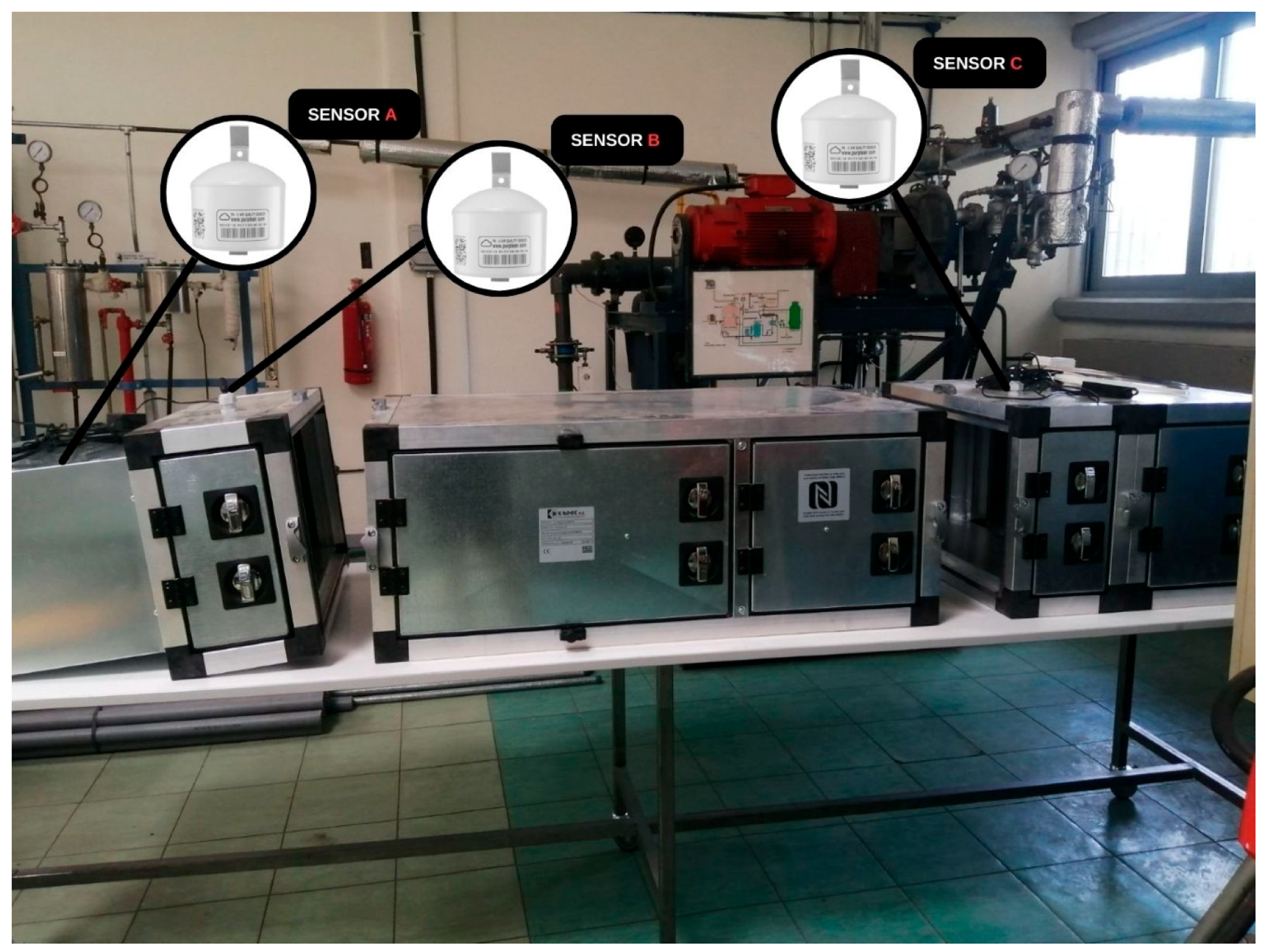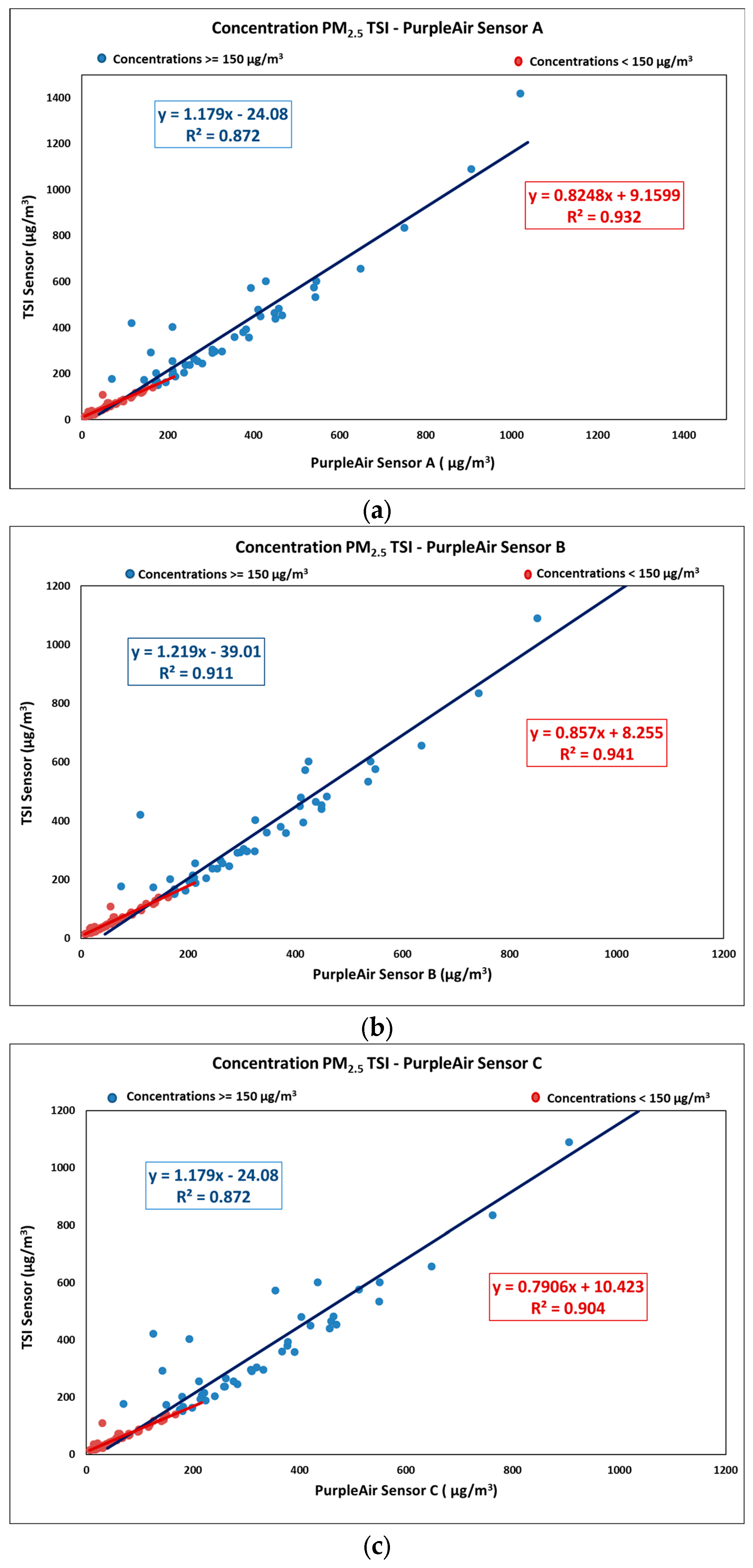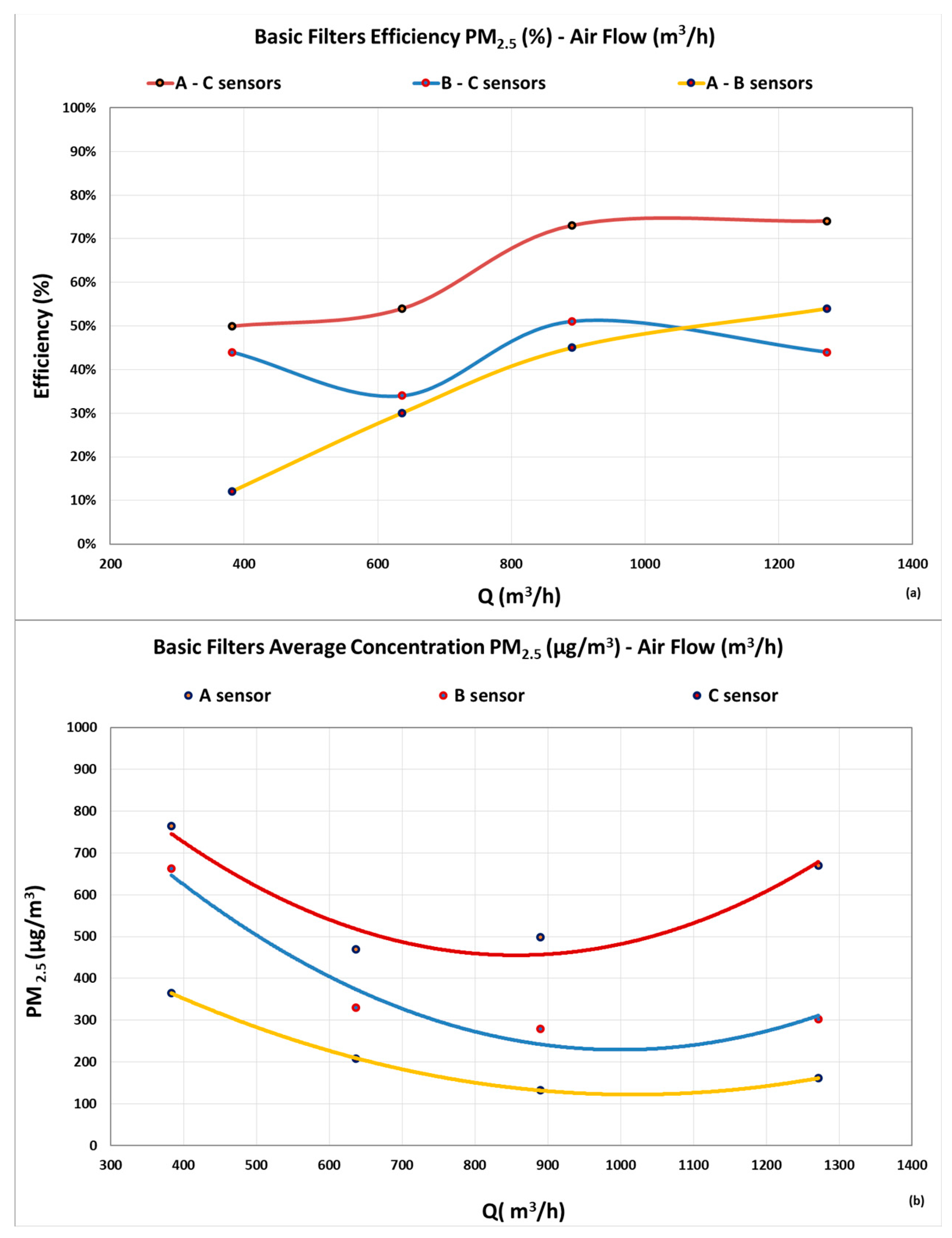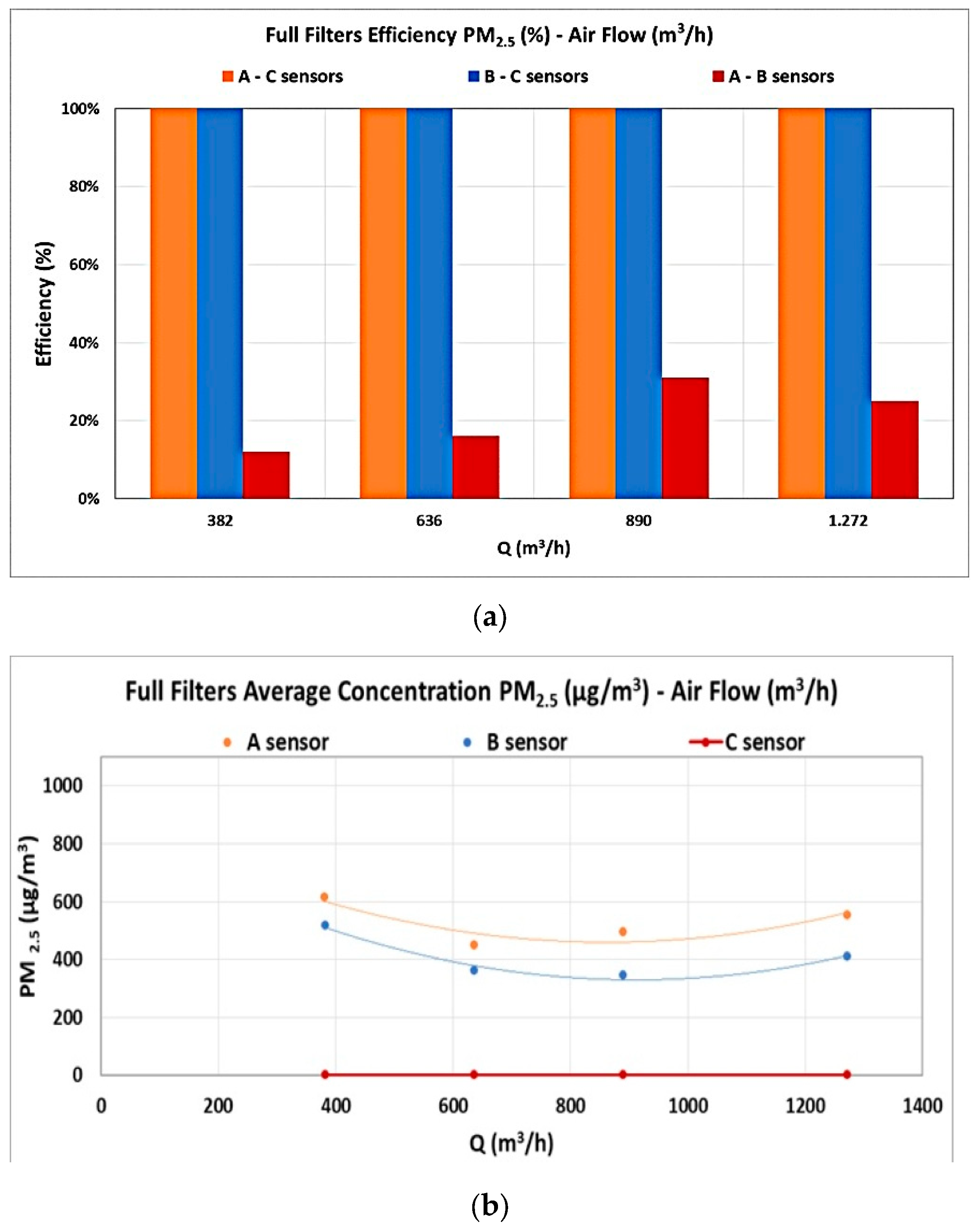An Analysis of the PM2.5 Concentrations from Insect Repellent Emissions Through a Bag Filter Unit †
Abstract
1. Introduction
2. The Bag Filter Retention Unit
3. Methodology
3.1. The Data Collection
3.2. Scenario Analysis
4. Results
5. Conclusions
Author Contributions
Funding
Institutional Review Board Statement
Informed Consent Statement
Data Availability Statement
Conflicts of Interest
References
- World Health Organization WHO. Air Pollution. 2019. Available online: https://www.who.int/health-topics/air-pollution#tab=tab_1 (accessed on 15 December 2024).
- Department of Health. Particle Pollution and Health. 2024. Available online: https://www.health.ny.gov/environmental/indoors/air/pmq_a.htm (accessed on 5 January 2025).
- EPA (United States Environmental Protection Agency). Health and Environmental Effects of Particulate Matter (PM). 2024. Available online: https://www.epa.gov/pm-pollution/health-and-environmental-effects-particulate-matter-pm (accessed on 5 January 2025).
- United States Environmental Protection Agency. What Is a MERV Rating? 2024. Available online: https://www.epa.gov/indoor-air-quality-iaq/what-merv-rating (accessed on 12 January 2025).
- ISO. ISO 16890-1:2016. 2016. Available online: https://www.iso.org/standard/57864.html (accessed on 12 January 2025).
- EMW filtertechnik. ISO 16890 Replaces EN 779. 2018. Available online: https://www.emw.de/en/filter-campus/iso-16890-replaces-en-779.html (accessed on 12 January 2025).
- Laios, A. Development of Experimental—Laboratory Exercises Using the Unit of Baghouses Filters Belonging to the Air Pollution Laboratory. 2025. Available online: https://polynoe.lib.uniwa.gr/xmlui/handle/11400/8452 (accessed on 15 April 2025).
- Kaffe, S.A. Active Carbon Removal System. 2017. Available online: https://www.kaffe.gr/product/1148/poiotita-aera-filtra-aera-tima-aposmisis-energoy-anthraka- (accessed on 18 March 2025).
- Seongjun, P.; Shinhye, L.; Myoungsouk, Y.; Donghyun, R. Field and laboratory evaluation of PurpleAir low-cost aerosol sensors in monitoring indoor airborne particles. Build. Environ. 2023, 234, 110127. [Google Scholar] [CrossRef]
- Lee, S.C.; Wang, B. Characteristics of emissions of air pollutants from mosquito coils and candles burning in a large environmental chamber. Atmos. Environ. 2006, 40, 2128–2138. [Google Scholar] [CrossRef]
- Ki-Joon, J.; Yong-Won, J. A simulation study on the compression behavior of dust cakes. Powder Technol. 2004, 141, 1–11. [Google Scholar] [CrossRef]
- Elsaid, A.M.; Mohamed, H.A.; Abdelaziz, G.B.; Ahmed, M.S. A critical review of heating, ventilation, and air conditioning (HVAC) systems within the context of a global SARS-CoV-2 epidemic. Process Saf. Environ. Prot. 2021, 155, 230–261. [Google Scholar] [CrossRef] [PubMed] [PubMed Central]




Disclaimer/Publisher’s Note: The statements, opinions and data contained in all publications are solely those of the individual author(s) and contributor(s) and not of MDPI and/or the editor(s). MDPI and/or the editor(s) disclaim responsibility for any injury to people or property resulting from any ideas, methods, instructions or products referred to in the content. |
© 2025 by the authors. Licensee MDPI, Basel, Switzerland. This article is an open access article distributed under the terms and conditions of the Creative Commons Attribution (CC BY) license (https://creativecommons.org/licenses/by/4.0/).
Share and Cite
Tsitsis, C.; Moustris, K.; Ntourou, K.; Laios, A. An Analysis of the PM2.5 Concentrations from Insect Repellent Emissions Through a Bag Filter Unit. Environ. Earth Sci. Proc. 2025, 35, 40. https://doi.org/10.3390/eesp2025035040
Tsitsis C, Moustris K, Ntourou K, Laios A. An Analysis of the PM2.5 Concentrations from Insect Repellent Emissions Through a Bag Filter Unit. Environmental and Earth Sciences Proceedings. 2025; 35(1):40. https://doi.org/10.3390/eesp2025035040
Chicago/Turabian StyleTsitsis, Christos, Konstantinos Moustris, Kleopatra Ntourou, and Angelos Laios. 2025. "An Analysis of the PM2.5 Concentrations from Insect Repellent Emissions Through a Bag Filter Unit" Environmental and Earth Sciences Proceedings 35, no. 1: 40. https://doi.org/10.3390/eesp2025035040
APA StyleTsitsis, C., Moustris, K., Ntourou, K., & Laios, A. (2025). An Analysis of the PM2.5 Concentrations from Insect Repellent Emissions Through a Bag Filter Unit. Environmental and Earth Sciences Proceedings, 35(1), 40. https://doi.org/10.3390/eesp2025035040






